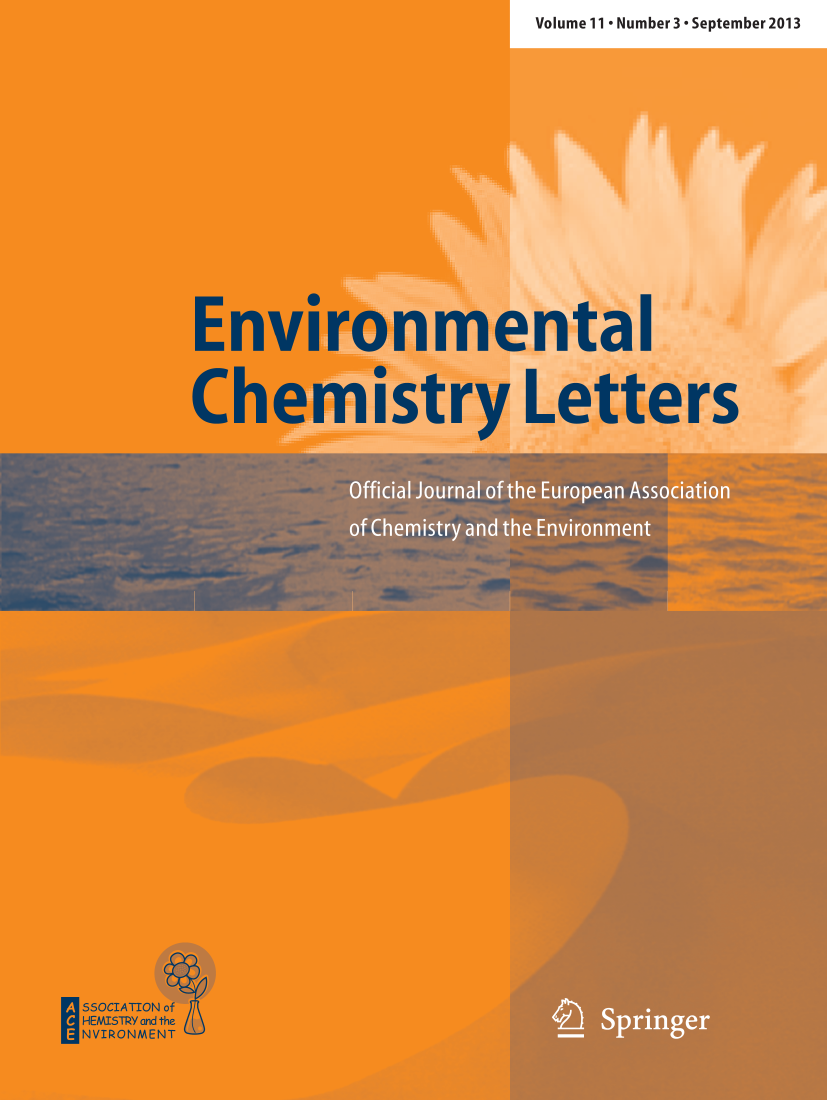Microbial dehalogenation of halogenated organic pollutants: a review
IF 20.4
2区 环境科学与生态学
Q1 CHEMISTRY, MULTIDISCIPLINARY
引用次数: 0
Abstract
Halogenated organic compounds are widely occurring persistent pollutants originating from herbicides, insecticides, and other industrial products, calling for advanced methods of environmental remediation. Here, we review the microbial processes allowing to remove the halogen atoms, namely, fluorine, bromine, and chlorine, from the pollutants. We discuss the fate of halogenated organic compounds, the microbial halogen cycle, bacterial dehalogenases, and the mechanisms of dehalogenation, metagenomics, and genetic modifications. Bacterial dehalogenases include hydrolytic, reductive, oxidative, and glutathione-dependent dehalogenases. Dehalogenation mechanisms comprise hydrolytic, reductive, and oxygenolytic dehalogenation.
含卤有机污染物的微生物脱卤研究进展
卤化有机化合物是广泛存在于除草剂、杀虫剂和其他工业产品中的持久性污染物,需要采用先进的环境修复方法。在这里,我们回顾了允许从污染物中去除卤素原子(即氟、溴和氯)的微生物过程。我们讨论了卤化有机化合物的命运,微生物卤素循环,细菌脱卤酶,脱卤机制,宏基因组学和遗传修饰。细菌脱卤酶包括水解、还原、氧化和谷胱甘肽依赖的脱卤酶。脱卤机制包括水解、还原和氧解脱卤。
本文章由计算机程序翻译,如有差异,请以英文原文为准。
求助全文
约1分钟内获得全文
求助全文
来源期刊

Environmental Chemistry Letters
环境科学-工程:环境
CiteScore
32.00
自引率
7.00%
发文量
175
审稿时长
2 months
期刊介绍:
Environmental Chemistry Letters explores the intersections of geology, chemistry, physics, and biology. Published articles are of paramount importance to the examination of both natural and engineered environments. The journal features original and review articles of exceptional significance, encompassing topics such as the characterization of natural and impacted environments, the behavior, prevention, treatment, and control of mineral, organic, and radioactive pollutants. It also delves into interfacial studies involving diverse media like soil, sediment, water, air, organisms, and food. Additionally, the journal covers green chemistry, environmentally friendly synthetic pathways, alternative fuels, ecotoxicology, risk assessment, environmental processes and modeling, environmental technologies, remediation and control, and environmental analytical chemistry using biomolecular tools and tracers.
 求助内容:
求助内容: 应助结果提醒方式:
应助结果提醒方式:


